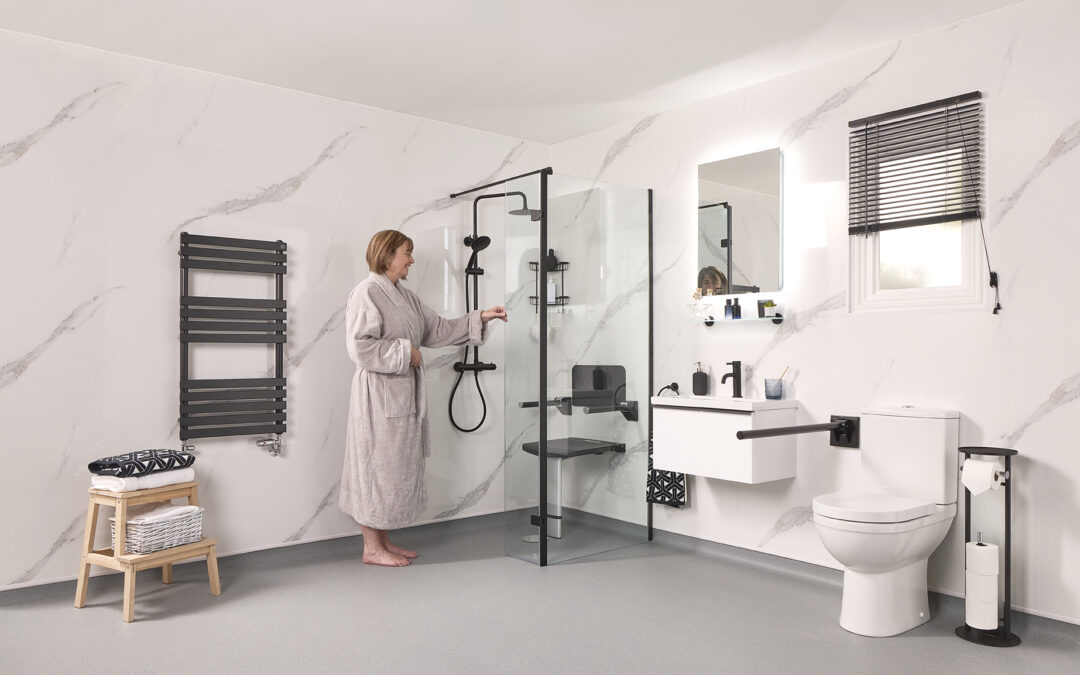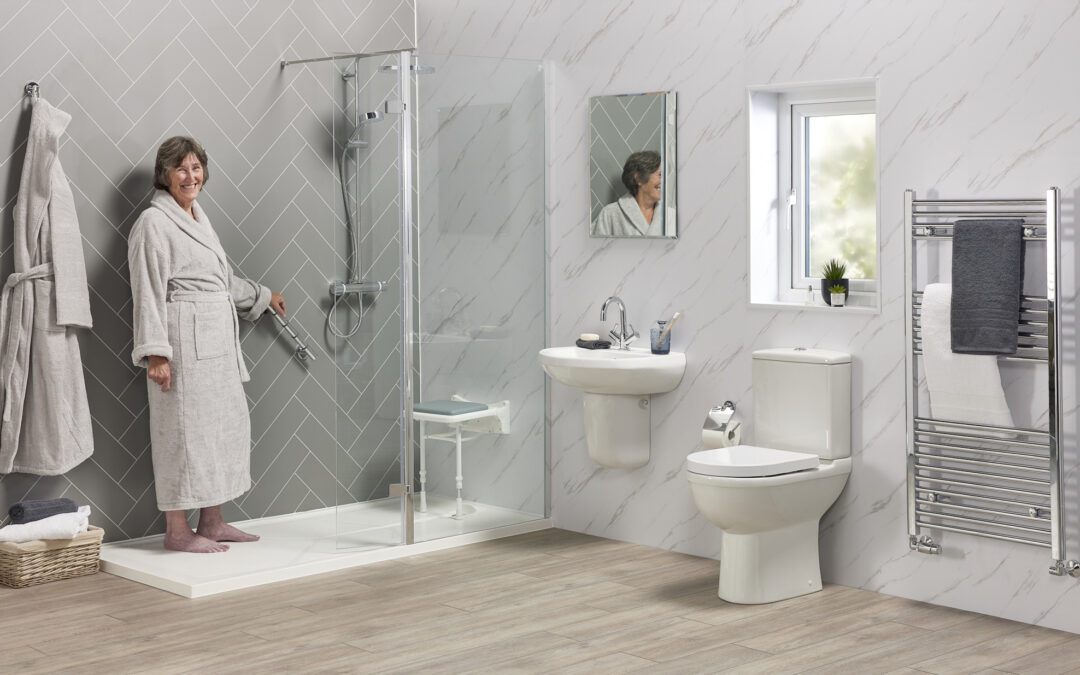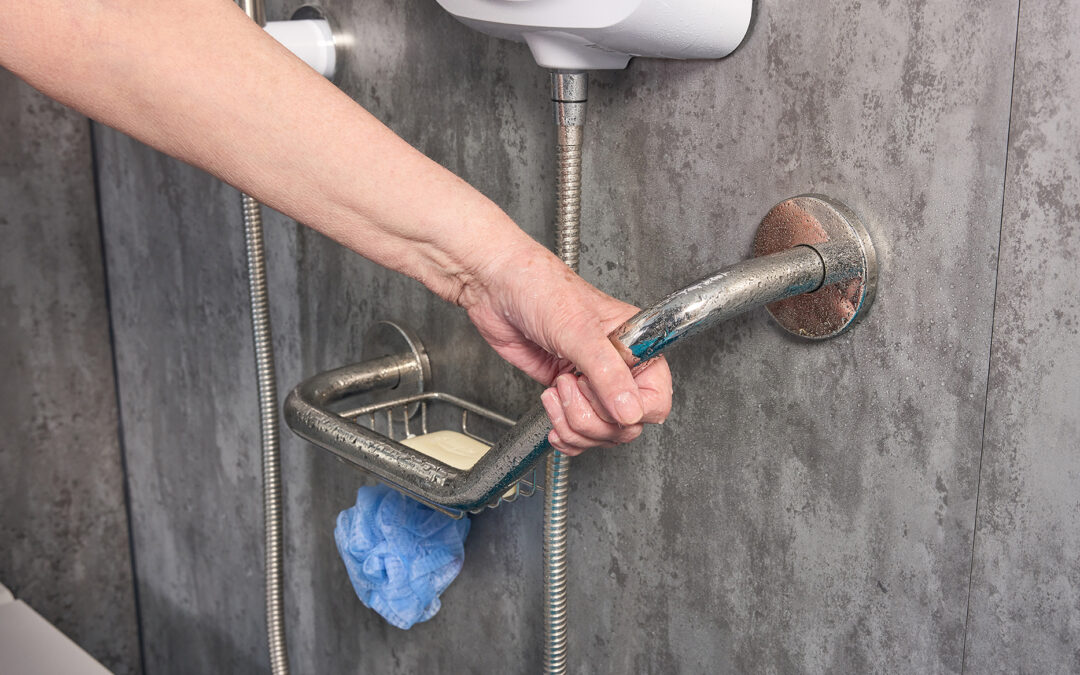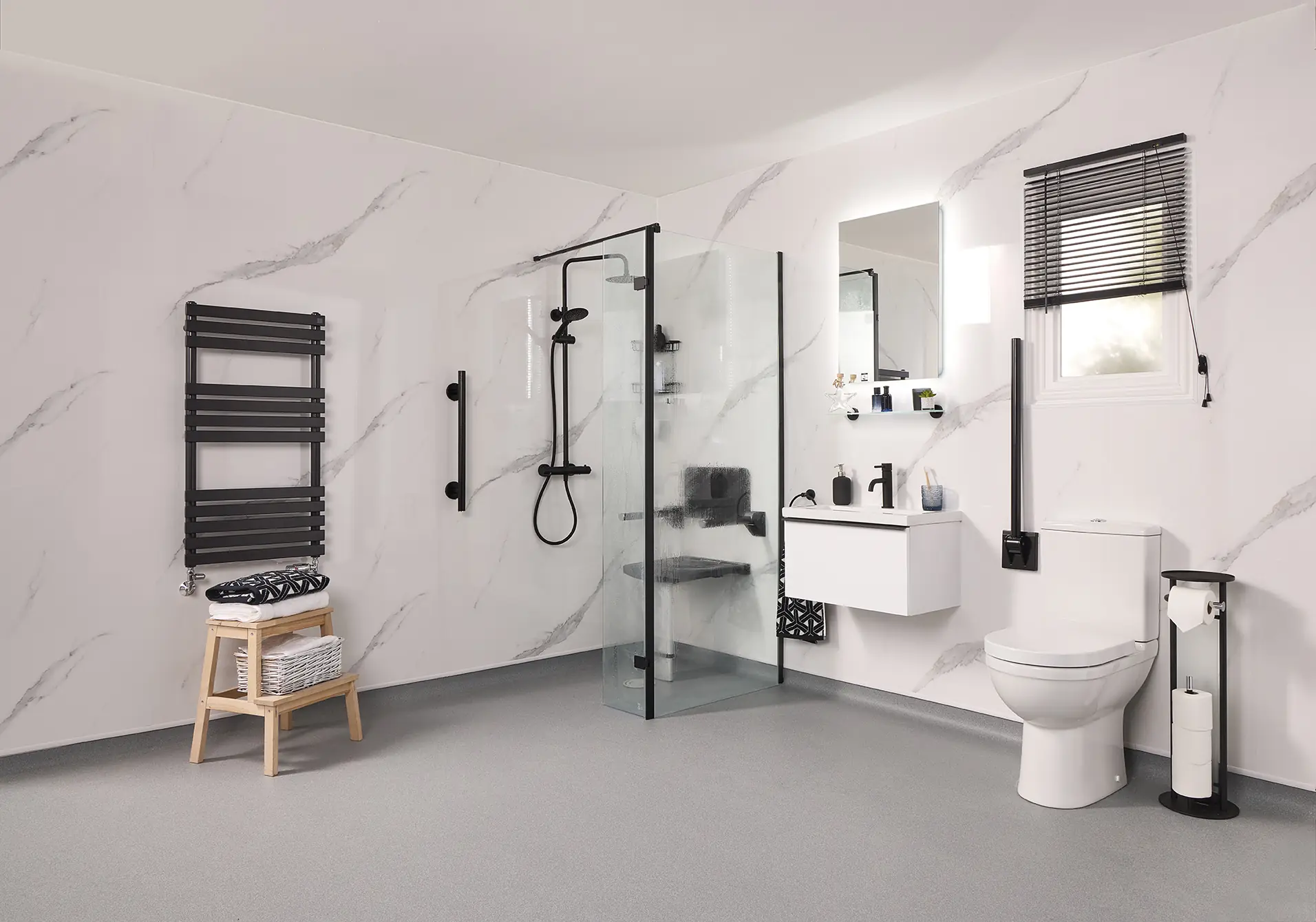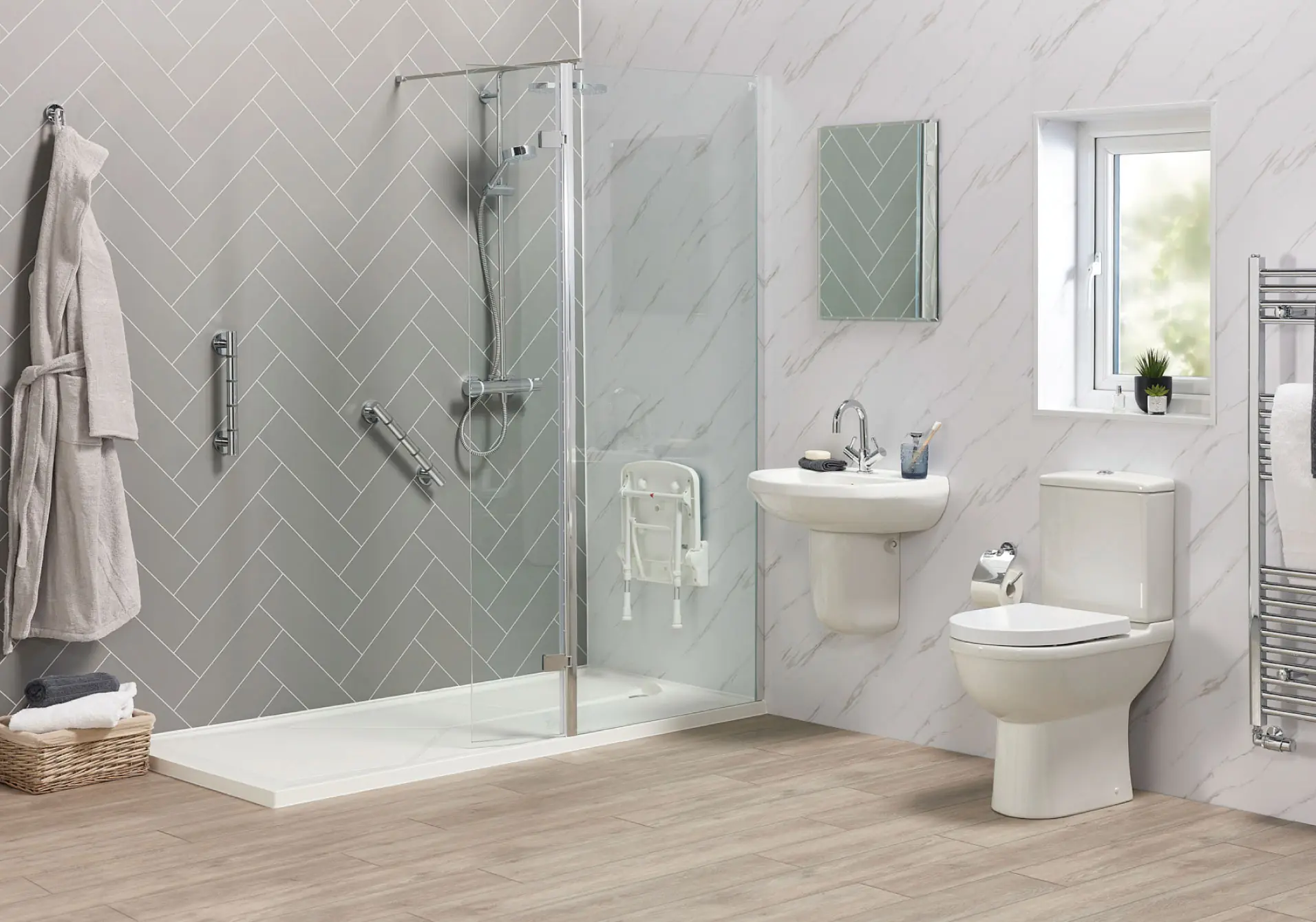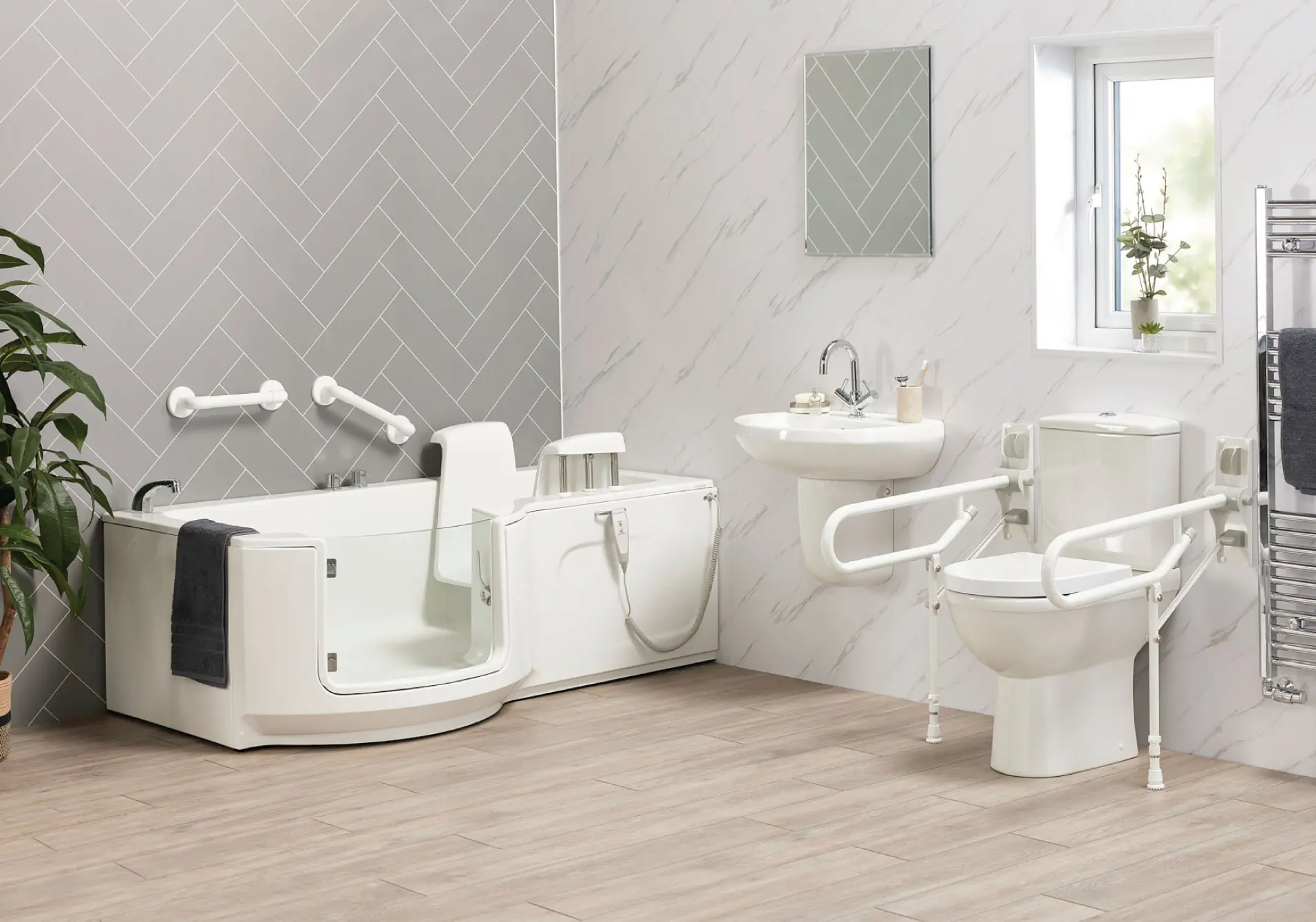Creating a bathroom that is both safe and accessible is crucial for individuals with mobility challenges, the elderly, or anyone seeking to make their daily routine easier. Whether you’re looking to enhance safety, improve comfort, or maintain independence, bathroom adaptations for disabled and elderly can transform your space into a functional and stylish environment.
In this guide, we’ll explore 19 essential bathroom adaptations for disabled and elderly individuals, offering practical solutions for enhanced accessibility. These adaptations cater to a wide range of needs, from general mobility aids to specialized toilets, easy-access showers, and features for wheelchair users and the visually impaired.
General Mobility Aids and Adaptations
These essential bathroom modifications ensure that users can navigate their space safely and confidently.
1. Grab Rails
Grab rails are a simple yet highly effective aid for enhancing bathroom safety. Installed in strategic locations like near the toilet, bathtub, or shower, they offer support when sitting, standing, or moving around.
Key Benefits:
- Increased stability
- Versatile design to match décor
- Easy installation anywhere
2. Assistance Poles
Floor-to-ceiling assistance poles provide stability when getting up from the toilet or bath. Ideal for users with limited mobility, they help prevent slips and falls.
Key Benefits:
- Offers steady support
- Various handle grips for comfort
- Increases independence
3. Bath Lifts
Bath lifts allow safe access to the bathtub, making it easier to get in and out. A powered seating device, it gently lowers and elevates the user.
Key Benefits:
- Ensures safe and comfortable bathing
- Helpful for users and caregivers
- Reduces risk of injury
4. Bathing Cushions
These inflatable devices provide extra support by lowering and raising the user inside the bath. They’re portable and affordable compared to powered bath lifts.
Key Benefits:
- Travel-friendly
- Affordable alternative to bath lifts
- Provides comfortable support
5. Slip-Resistant Mats
Prevent slips and falls with slip-resistant mats, which add traction to slick surfaces like bathtubs, showers, and bathroom floors.
Key Benefits:
- Affordable safety solution
- Can be used in multiple areas
- Enhances bathroom safety for all users
6. Shower Seats
Fixed or foldable shower seats offer support for users who cannot stand for extended periods. They’re especially useful for wheelchair users or those with joint pain.
Key Benefits:
- Increases showering comfort and safety
- Available in portable and affixed options
- Reduces fatigue during bathing
7. Emergency Pull Strings
Emergency pull strings provide a simple way to call for help in case of a fall or emergency, giving peace of mind to both users and caregivers.
Key Benefits:
- Easy to install and use
- Quick response for emergency situations
- Can be installed in strategic areas
Specialist Toilets
Toilets with added accessibility features enhance user independence, offering a range of innovative adaptations.
8. Automatic Bidet Toilets
Wash and dry bidet toilets offer increased hygiene and independence. These toilets clean users with warm water and dry with air, often controlled via remote.
Key Benefits:
- Greater privacy and independence
- Customizable temperature and air settings
- Touchless cleaning and drying
9. Height-Adjustable Toilets
Height-adjustable toilets can be raised or lowered to suit the user, making them ideal for individuals with reduced mobility. Some models come with built-in armrests for additional support.
Key Benefits:
- Supports mobility-challenged users
- Easy to use and operate
- Can be paired with armrests for added comfort
10. Raised-Height Toilets
These slightly elevated toilets make it easier for users to sit and stand, reducing strain on the knees and hips.
Key Benefits:
- Subtle yet effective height increase
- Easier to install than powered options
- Ideal for people with limited lower body strength
Adaptations for Wheelchair Users
Modifications that provide wheelchair users easier access to bathroom facilities help improve independence and usability.
11. Floating or Height-Adjustable Basins
Wheelchair-friendly basins, also known as floating basins, allow users to comfortably fit beneath the sink. Height-adjustable models provide more flexibility by allowing users to change the basin’s height.
Key Benefits:
- Improved accessibility for wheelchair users
- Stylish and functional design
- Easy to install
12. Sliding Doors
Replacing swing-hinge doors with sliding doors creates more space and makes it easier for wheelchair users to navigate the bathroom.
Key Benefits:
- Saves floor space
- Easier for wheelchair users to operate
- Provides smoother entry and exit
13. Wider Doorways
For wheelchair users, widening doorways ensures easier access and smoother movement in and out of the bathroom. A width of 40 to 48 inches is typically recommended.
Key Benefits:
- Increases independence
- Faster, more seamless bathroom access
- Reduces the need for additional assistance
14. Accessible Light Switches
Strategically placed light switches make it easier for wheelchair users to control bathroom lighting without stretching or straining.
Key Benefits:
- Improved bathroom safety
- Can be customized to preferred heights
- Suitable for various mobility levels
Aids for Visually Impaired Users
For individuals with visual impairments, small adaptations can dramatically enhance safety and independence in the bathroom.
15. High Contrast Fixtures
Using contrasting colors for taps, tiles, and countertops can help visually impaired individuals navigate the bathroom more easily.
Key Benefits:
- Easier identification of fixtures
- Increased independence
- Stylish and functional design
16. Voice-Activated Showers
Voice-controlled showers allow visually impaired users to manage water temperature and pressure hands-free. These smart showers can be controlled via voice commands or integrated with smart home systems.
Key Benefits:
- Enhanced convenience and safety
- Adds value to your home
- Fully customizable showering experience
Easy-Access Showers and Baths
For individuals with mobility challenges, accessible showers and baths offer ease of use while maintaining comfort and style.
17. Wet Rooms
Wet rooms are completely waterproof, eliminating the need for a shower tray or steps, making them the most accessible shower solution available.
Key Benefits:
- Zero trip hazards
- Easy for both users and caregivers
- Maximizes space and accessibility
18. Walk-In Showers
Walk-in showers provide easy access with a low threshold and no doors, offering a practical and stylish solution for individuals with limited mobility.
Key Benefits:
- Increased independence
- No need for high steps or doors
- Accessible for users and caregivers
19. Walk-In Baths
With walk-in baths, users can open a door on the side of the tub and step in, eliminating the need to lift their legs over the bath’s edge.
Key Benefits:
- Easy access and exit
- Provides a relaxing bathing experience
- Wide range of sizes and styles available
Conclusion: Transform Your Bathroom for Safety and Comfort
From grab rails to voice-activated showers, these bathroom adaptations offer practical, stylish, and effective solutions for those with mobility challenges. By incorporating these adaptations, you can create a bathroom that not only meets accessibility needs but also enhances daily comfort, safety, and independence.
No matter your specific needs, there are countless ways to transform your bathroom into a safer and more comfortable space for all users.




